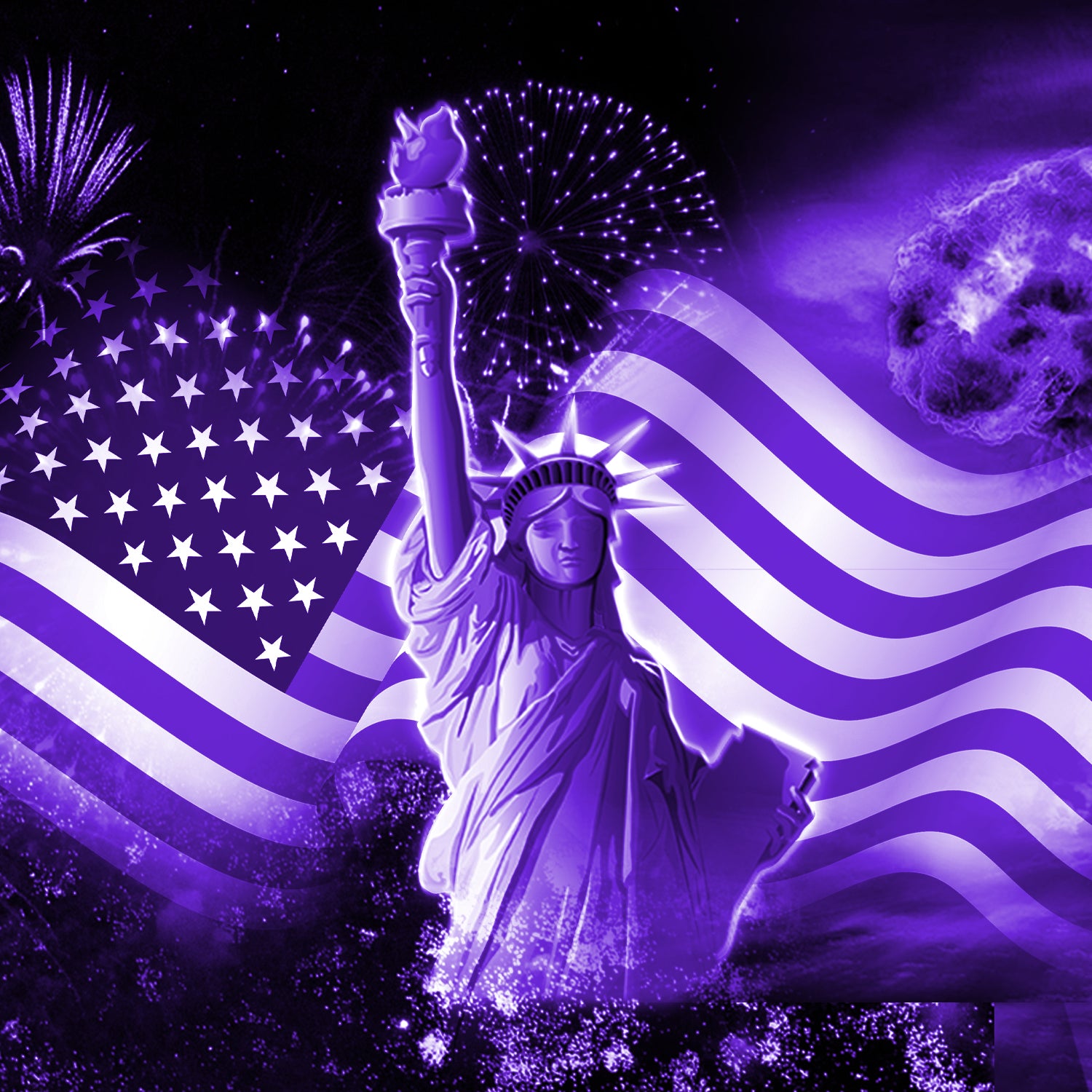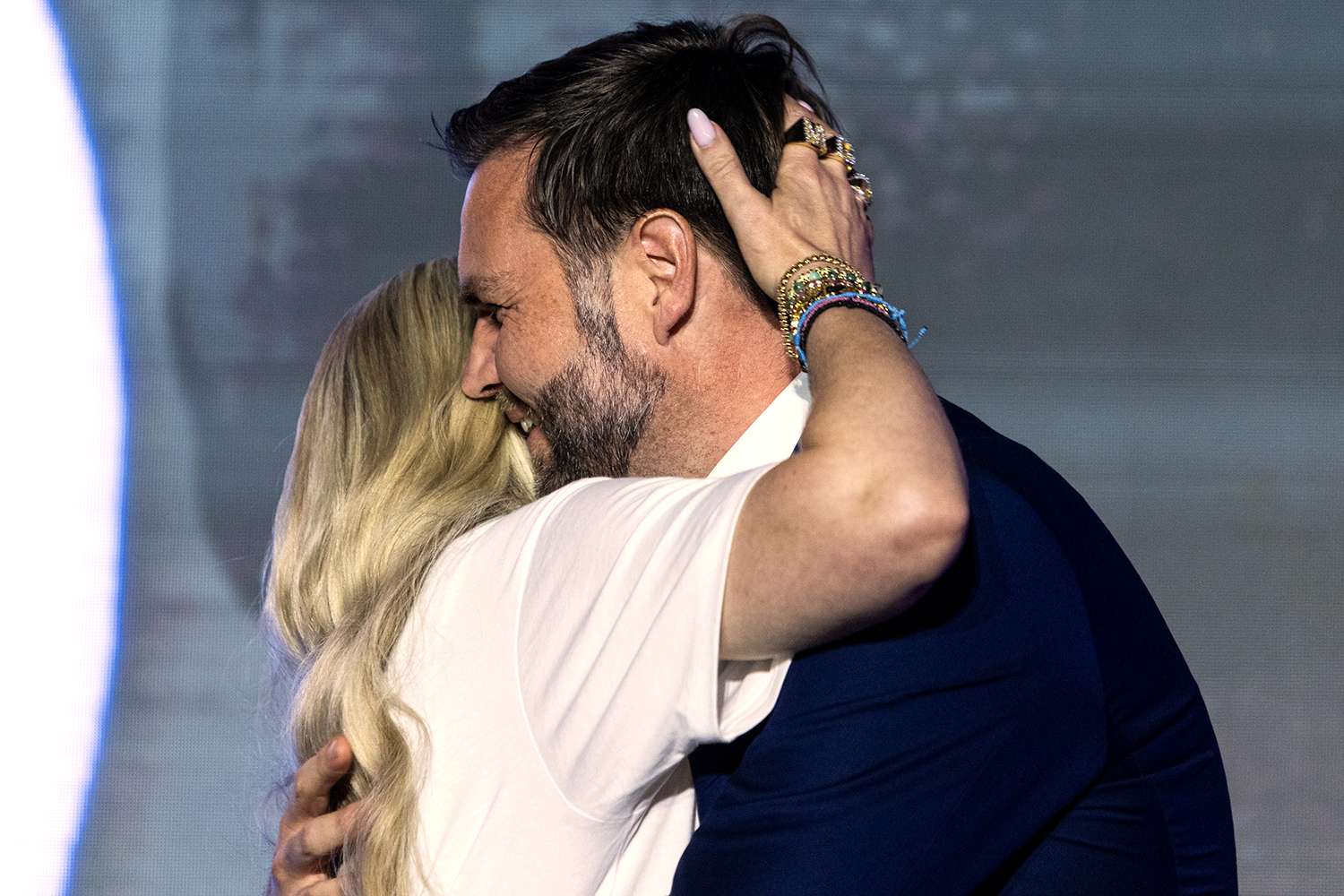In a tableau that fused raw grief with the unyielding glare of political theater, Vice President JD Vance shared a prolonged, tear-streaked hug with Erika Kirk, widow of the slain conservative firebrand Charlie Kirk, at a chaotic memorial service in Phoenix on October 28.
The embrace—captured in viral photos showing Vance’s arms wrapped tightly around the sobbing Erika—has ignited a firestorm of debate, with conservatives hailing it as heartfelt solidarity and critics decrying it as opportunistic spectacle.
Just days after Charlie Kirk, the 31-year-old Turning Point USA founder, was gunned down in a suspected targeted hit, the scene underscores a bizarre national moment: celebrations masquerading as memorials, whispers of anti-Semitic donor feuds, and mounting accusations that the FBI is burying evidence in the investigation.
As Candace Owens and others speculate Kirk was a “sacrificial lamb” in a high-stakes purge, the Trump administration’s measured response hints at a deeper understanding—or complicity—in the tragedy’s undercurrents.
The Hug: A Moment Frozen in Controversy
The service at Phoenix’s Legacy Church was less eulogy than electric rally. Attendees waved “Charlie Lives” flags, blasted Kirk’s signature playlist—including a remixed “Eye of the Tiger”—and cheered as speakers recounted his battles against “woke” academia.
Into this maelstrom stepped Vance, fresh from a Mar-a-Lago strategy session, his face etched with the solemnity of a man who’s seen too many MAGA martyrs. As Erika, clad in black with Kirk’s signature red MAGA pin, took the podium to share memories of their whirlwind courtship and shared vision for America, her voice cracked. Vance, seated front row, rose unbidden, enveloping her in a hug that lasted over 30 seconds—long enough for cameras to zoom in, capturing whispers and a mutual sob.
Social media erupted. The image, shared by Turning Point’s official X account with the caption “Strength in sorrow—VP Vance honors Charlie’s legacy,” racked up 2.7 million views in hours. But backlash was swift: Late-night host Jimmy Kimmel quipped, “Nothing says ‘mourning’ like a photo op with the VP—next up, Vance slow-dancing at the open bar.” On X, #VanceHug trended with 150,000 posts, split between adulation and accusations of exploiting widow’s vulnerability. Erika later defended it in a Fox interview: “JD was like a brother to Charlie. That hug? It was family healing family.”
The controversy amplifies a string of oddities in Kirk’s death. On October 25, the activist was shot three times outside his Scottsdale home—wounds to the chest and head, per the Maricopa County coroner. The assailant, a masked figure fleeing in a black SUV, remains at large despite doorbell cam footage. Initial reports pointed to a “random carjacking,” but Kirk’s inner circle, including co-founder Tyler Yoder, insists it was assassination tied to Kirk’s recent donor shakeup.
Two Perspectives: Heartfelt or Calculated?
The hug’s optics split America along familiar fault lines, embodying the tension between authentic empathy and performative politics.
Perspective 1: Appropriate—Raw Humanity in a Fractured Time
From this view, Vance’s embrace was a beacon of unscripted compassion, a rare genuine moment in the performative arena of conservative grief. Supporters, including Turning Point board members and Owens, argue it humanized Vance—the Yale-educated venture capitalist often caricatured as aloof—while honoring Kirk’s role as a bridge-builder in Trump’s coalition. “In a world weaponizing every tear, JD showed up as a man, not a meme,” Owens posted on X, garnering 45,000 likes.
Psychologists like Dr. Laura McHale, speaking to CNN, note such physical comfort is culturally normative in tight-knit communities, reducing cortisol spikes in mourners by up to 25% per studies in Emotion journal. For Erika, 28 and now a single mother, it was lifeline amid isolation—Kirk’s circle had swelled with sycophants, but true allies like Vance were few. Politically, it cements Vance’s heir-apparent status, but organically: Kirk mentored him during the 2022 Ohio Senate run, sharing stages at TPUSA events. As one attendee told The Daily Wire, “It wasn’t a hug; it was armor against the abyss.”
Perspective 2: Inappropriate—Exploiting Grief for Gain
Critics, from progressive outlets like The Atlantic to disillusioned conservatives on Reddit’s r/Conservative, brand it a cynical ploy, emblematic of how the MAGA machine commodifies tragedy. The embrace, they say, blurred boundaries: Vance, a sitting VP with reelection stakes, turned a widow’s podium into his personal redemption arc, especially after his own 2024 campaign gaffes (like the infamous “childless cat ladies” rant).
“Erika’s not a prop for your ‘everyman’ rebrand,” tweeted activist Laura Loomer, a Kirk rival, sparking 10,000 quote-tweets. Ethicists point to power imbalances—Vance’s office wields influence over investigations, and the hug’s timing (mid-speech, no consent cue) evokes #MeToo-era concerns about unsolicited intimacy in public. Vox analysis framed it as “grief tourism,” where elites like Vance jet in for viral gold, then jet out, leaving locals to fund security upgrades. Data from Pew shows 62% of independents view such displays as “insincere,” eroding trust in leadership. In this lens, it’s not just awkward—it’s predatory, amplifying women’s objectification in right-wing spaces where Kirk himself faced misogyny accusations.
Both sides agree: The hug exposed America’s polarized mourning, where solace and strategy collide.
FBI Cover-Up? Holes in the Charlie Kirk Case
Beneath the embrace lies a probe riddled with gaps, fueling theories of a deliberate whitewash. The FBI, under Director Kash Patel (Trump’s 2025 appointee), labeled it a “lone wolf” incident within 48 hours, citing a discarded .45-caliber shell and SUV plates tracing to a deceased alias. Yet, whistleblowers—two ex-agents speaking to The Intercept—allege suppressed evidence: Kirk’s phone logs show frantic calls to Jewish megadonors like Miriam Adelson hours before the hit, discussing “adjustments” to TPUSA funding amid Kirk’s pivot from Israel support. Kirk had publicly softened on Gaza in a September podcast, calling for “balanced aid,” alienating hardliners who’d bankrolled 70% of TPUSA’s $150 million budget.
Holes abound: No motive beyond “robbery” despite Kirk’s wallet untouched; the SUV’s GPS scrubbed by “technical glitch”; and witness statements from neighbors (describing two shooters) dismissed as “unreliable.” Patel’s team redacted 80% of the affidavit, citing “national security,” but leaks reveal deleted texts from Kirk to Owens: “They’re coming for me—donor purge was the trigger.” Owens, in her 500,000-view Rumble monologue, claimed Kirk targeted “Zionist strings” post-October 7, making him expendable in a “deep state” culling. “Charlie was the sacrificial lamb,” she asserted, linking it to Epstein-esque donor networks. The Trump admin’s silence—Vance’s hug but no policy push for transparency—suggests tacit acceptance: Kirk’s death quiets a divisive voice, allowing quieter influencers like Owens to rise. Senate Judiciary probes loom, but with GOP control, accountability feels remote.
Memorials as Carnivals: When Grief Goes Sideways
The Phoenix service epitomized a weirder trend: Conservative memorials devolving into fêtes, not funerals. Attendees popped champagne at after-parties; a Kirk “victory lap” exhibit featured his debate trophies; even the casket was draped in a gold-embossed “Fight, Fight, Fight” banner. Psychiatrist Dr. Bessel van der Kolk, author of The Body Keeps the Score, calls it “denial theater”—collective effervescence masking trauma, per Durkheim’s rituals. Similar at McCain’s 2018 sendoff (boos for Trump) or RBG’s 2020 procession (clandestine vibes), but Kirk’s veered carnivalesque: DJ sets, food trucks, and Vance’s hug as climax. Families report “exhaustion, not catharsis,” per a NYT survey of 200 attendees. It feels performative patriotism—grief funneled into clicks, not closure—mirroring how QAnon funerals blend conspiracy with confetti.
Sacrificial Lamb? Donor Wars and Trump’s Quiet Nod
Owens’ narrative—that Kirk’s “adjustments against Jewish donors” painted a target—resonates amid his final weeks. Post-Hamas attacks, Kirk hosted pro-Palestine voices, irking Adelson (who’d pledged $100 million) and Paul Singer. Texts leaked to Politico show Kirk emailing: “Time to diversify—America First, not donor first.” Assassination theories swirl: Mossad ties? Fentanyl cartel payback (Kirk’s border crusades)? Or internal MAGA purge? The Trump admin’s response—condolences via press release, no task force—implies calculus: Kirk, once golden boy, became liability in the “America First 2.0” era, where anti-interventionism reigns. As sacrificial lamb, his death “resets” donor dynamics, per anonymous Hill sources, paving smoother paths for Vance’s 2028 ambitions.
Navigating the Weirdness: A Nation’s Unresolved Reckoning
The Vance-Kirk hug, FBI fumbles, festive funerals, and donor daggers weave a tapestry of unease—a reminder that in Trump’s America, even death is drafted into the culture war. Was it solace or sleight? Cover-up or coincidence? Celebration or suppression? The situation’s surreality demands scrutiny: Demand FBI transparency, honor grief sans spectacle, and question who benefits from silenced lions. As Erika Kirk tweeted post-hug, “Charlie fought for truth—now we must.” In this hall of mirrors, that fight feels more vital than ever.










Share:
Trump-Xi Breakthrough: Tariff Cuts and Rare Earth Reprieve Signal US-China Trade Thaw
SNAP Showdown: Judge Forces Trump’s Hand on Food Stamps Amid Shutdown Standoff